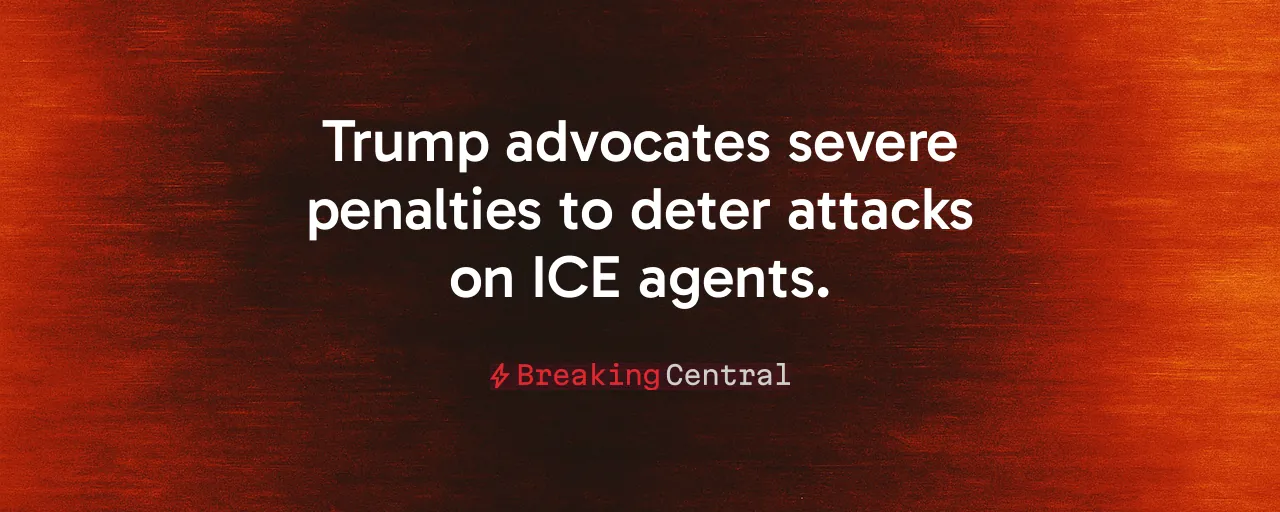A Call for Ironclad Consequences
President Trump's recent demand for 'very stiff' penalties for those who shoot at Immigration and Customs Enforcement officers has reignited a fierce debate about law enforcement safety and the rule of law. Speaking with characteristic bluntness, Trump insisted that such attackers deserve 'a long time in jail,' signaling a no-tolerance stance on violence against federal agents. The comment, sparked by a reporter's question, comes amid a string of alarming incidents, including a July 4 ambush outside an ICE facility in Alvarado, Texas, where ten suspects now face attempted murder charges.
This issue strikes at the heart of national security and public order. Attacks on ICE officers, tasked with enforcing immigration laws, represent direct challenges to the government's authority. The rising number of assaults on Department of Homeland Security personnel in recent years underscores the urgency of addressing this threat. Trump's call reflects a broader commitment to protecting those who serve, a priority that resonates deeply with communities valuing law and order.
The debate is far from simple. While few dispute the need to punish such violence, questions linger about how severe penalties should be, how they deter future attacks, and whether they risk escalating tensions around immigration enforcement. The Alvarado incident, where gunfire targeted a detention center, has become a flashpoint, amplifying calls for action while exposing divides over the best path forward.
The Stakes for Federal Agents
ICE officers operate in a high-stakes environment, often facing hostility from organized groups opposing immigration enforcement. Federal data reveals a steady uptick in assaults on DHS personnel since 2017, with incidents ranging from physical altercations to coordinated shootings. The Alvarado ambush, where suspects allegedly planned their attack to disrupt operations, illustrates the growing audacity of such threats. For officers and their families, these dangers are a daily reality, demanding robust protections.
Historical trends offer insight. In the 1990s, stronger penalties for attacks on police correlated with a decline in such crimes, suggesting that clear consequences can shape behavior. Advocates for tougher sentences argue that current laws, which allow up to 20 years for assault with a deadly weapon, fall short of deterring ideologically driven attackers. They point to cases like Alvarado, where political motives fueled violence, as evidence that penalties need to match the gravity of the threat.
A Case for Maximum Deterrence
Supporters of Trump's stance argue that only severe consequences can safeguard federal agents and maintain order. Amending existing statutes to impose 30-year or life sentences for shooting at ICE officers would send an unmistakable message: attacks on those upholding the law will not be tolerated. Classifying such acts as domestic terrorism, especially when driven by extremist ideologies, could further strengthen prosecutions and deter would-be assailants.
This approach aligns with a broader commitment to law enforcement. Federal funding for officer safety, from advanced protective gear to enhanced facility security, complements harsher penalties. The 1994 Crime Bill, which stiffened punishments for federal officer assaults, provides a precedent, showing that decisive action can reduce violence. Advocates also note that lenient policies, like those in some sanctuary jurisdictions, may embolden radicals by signaling weak enforcement.
Balancing Justice and Proportion
Critics of harsher penalties raise valid concerns about proportionality and unintended consequences. Research shows that sentences beyond 15 to 20 years often yield diminishing deterrent effects, as the certainty of punishment matters more than its length. Overly broad statutes could also sweep up less culpable offenders, straining an already burdened prison system. The cost of lifetime incarceration, averaging $1.5 million per inmate, adds a fiscal dimension to the debate, diverting resources from prevention or rehabilitation.
Community trust is another factor. Heavy-handed measures risk alienating immigrant populations, who may perceive them as escalating an already tense enforcement climate. Historical clashes, like the 2019 Tacoma ICE facility attack, highlight how militarized tactics can fuel backlash. A balanced approach might pair targeted penalties for clear-cut cases, like organized ambushes, with investments in de-escalation training and community engagement to reduce confrontations.
Learning From the Past
The issue is not new. Since 1934, when assaulting federal officers became a distinct crime, penalties have evolved to address emerging threats. The 1960s civil rights era and post-9/11 terrorism concerns prompted expansions, reflecting society's resolve to protect its agents. Today's ICE facility attacks echo these earlier challenges, blending ideological opposition with direct violence. Understanding this history underscores the need for policies that adapt to modern realities without overreaching.
Bipartisan efforts offer a potential model. Proposals like the COPS Act, reintroduced in June 2025, aim to enhance officer safety through funding and targeted sentencing enhancements. Graduated penalties, tied to specific factors like conspiracy or automatic weapons, could bridge divides, ensuring punishment fits the crime while addressing public safety.
Forging a Safer Future
Trump's call for stiff penalties reflects a clear priority: protecting those who enforce the nation's laws. The rise in assaults on ICE officers demands action, and severe consequences for attackers can serve as a powerful deterrent. However, the solution needs to be precise, targeting the most egregious threats without inflaming broader tensions. Strengthening statutes, boosting officer protections, and fostering community dialogue all play a role.
The path ahead requires resolve and nuance. Policymakers need to weigh the evidence, from historical successes to criminological research, to craft laws that uphold order while preserving justice. Engaging stakeholders, from officers to local communities, ensures policies reflect real-world needs. The Alvarado ambush serves as a stark reminder of what's at stake, urging leaders to act decisively.
This is about upholding the rule of law for all, alongside punishment. By prioritizing deterrence and protection, the nation can affirm its commitment to those who serve, ensuring that attacks on ICE officers face consequences that match their severity.
